Last time on Weird Wednesday, we looked at Skunny: Back to the Forest, the first platforming game created by Copysoft in 1993. The game was an ambitious mess; while practically unplayable, it still showed that 2D platformers on PC could run as fast as (if not faster than) Sonic the Hedgehog or Super Mario World.
But Copysoft, a small studio in Belgium, had five other games released that very same year. After all, it’s easier to sell shoddily made games before you have a reputation. Out of those games, Skunny Kart would become the most infamous of all.
A piece of Nintendo’s pie
Skunny Kart is a blatant knock-off of Super Mario Kart. Flat maps, blocky walls, ramps — it’s got everything you’d expect. But it also had a squirrel named Skunny, sound effects stolen from The Simpsons and The Terminator, … and Satan.
Honestly, Skunny Kart feels more like a prototype than a finished game. Since there’s no reverse button, it’s incredibly easy to wedge yourself into a corner. Every opponent follows the exact same path through each track, and pickups tend to hurt more than help (though part of that is due to controls being bound to CTRL, ALT, Shift, and Tab, a scheme that works fine in DOS but is a nightmare in Windows).
It’s no secret that Skunny Kart tried to recreate Nintendo’s magic on the PC. However, while many computers had the technical capabilities to recreate the experience, unique builds and pieces of hardware made the feat a logistical nightmare. From graphics cards to RAM, very little had been standardized in the computing industry, and each game sold needed to work with hundreds of setups.
And then there were sound cards.
My god, the sound cards
If you have never installed a game on a computer before Windows 95, ask someone who has. They will tell you about the sound card struggle. What’s the I/O address configuration? The base I/O? What the crap does IRQ mean? How about the 8- or 16-bit DMA channels? Does your sound card use OPSL or OPSR? IFSD or APSD?!
My father taped a piece of paper to the desk that had the individual sound card settings we had to input for every single installation. It took him days to put that thing together, and he was not going to lose it.
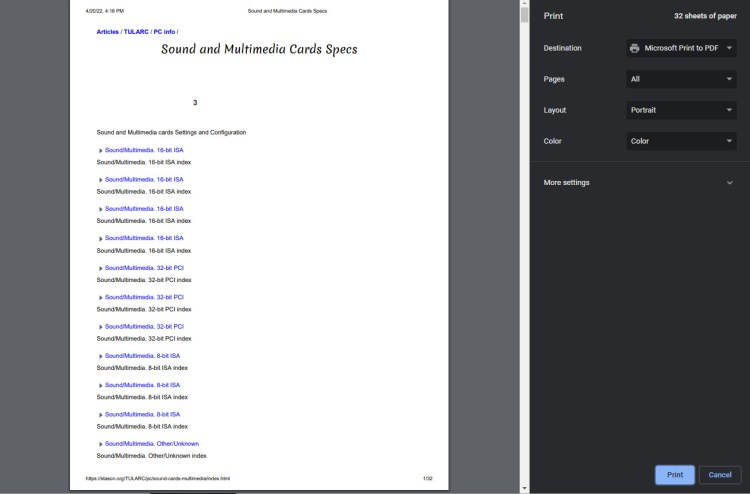
Want to setup your audio for a ’90s PC? Stason’s got you covered with 32 PAGES OF LINKS. I’m not even joking.
Optimizing a game for every single sound card out there alone would be weeks of work. I can’t fathom the effort needed to optimize for everything else. This is the reason why most games (except Doom) felt less action-packed than the console counterparts of the time — action was impractical.
Skunny Kart was a game style that had never been on a home computer before, and while the game does not address some problems automatically, the developers actually included options to fine-tune game speed for what an individual computer could handle.
So how was Skunny Kart?
Had it come out before Super Mario Kart, it would have been revolutionary. For coming out a year after, though, it actually isn’t terrible. Sure, the game has some glaring problems (no ability to back up, for example), but it was a decent attempt at copying that Mode 7 faux-3D feel that the Super Nintendo boasted.
There was just one small problem.
Wacky Wheels
When Skunny Kart launched, a very similar game was in the final phases of beta testing, almost ready to ship. Called Wacky Wheels, this Apogee kart racer shared more than a few visual similarities; it had much of the same code.
You see, both Apogee and Copysoft were working with a development studio called Beavis-Soft. While it appears the latter was performing contracting work, Andy Edwardson — one of two employees in the studio — got bored and threw together a kart racing prototype called Wacky Kart. He shared it with Copysoft, and the company was thrilled! The developer immediately posted pictures of the game on Compuserve.
The problem, though, is that Beavis-Soft and Copysoft had no formal agreement over the game. Apogee saw the screenshots posted online, and understandably, it wanted to distribute the game — if it looked that great as a prototype, it could release something even better! Honestly, reading Andy Edwardson’s account is the best way to get how the back-and-forth went between the various groups about what company would publish and distribute the finished product.
Get your agreements in writing
At the end of the day, Edwardson believed that Apogee had the distribution rights. The kart game was theirs.
But that statement was from Apogee, not Copysoft. In fact, Edwardson didn’t appear to have much communication with Copysoft at all. His discussion about which company would own the game was solely with Apogee.

This is the intro screen to the Wacky Kart prototype. As a casual viewer, I can see how Copysoft (aka Edisys SCRL) would assume it had the rights.
As anyone who has worked in an office job knows, you cannot trust one company to accurately represent what the other company has agreed to. Edwardson had already sent the source code to Copysoft, and various game screens made it clear that the prototype was intended to be a Copysoft game.
Heck, Edwardson had even included a text file with lore about the kart game and made-up reviews. And all of these files reference Copysoft multiple times.
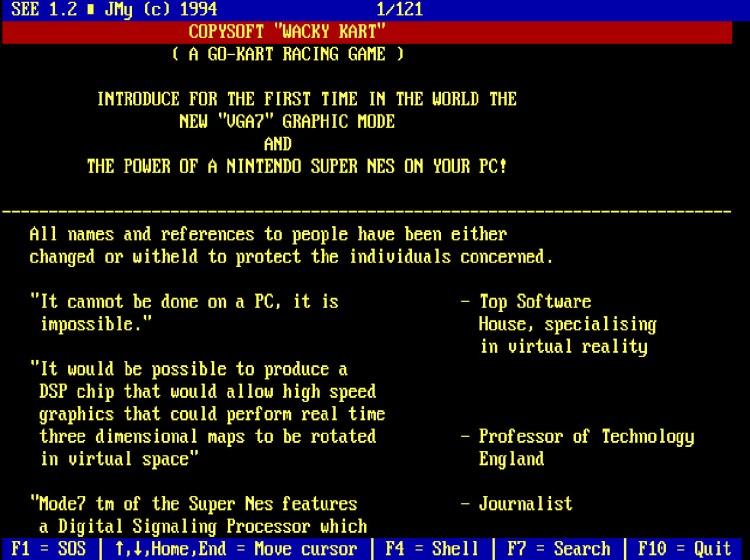
Note that the made-up reviews discuss the game’s ability to copy the Super Nintendo’s Mode7 technology.
This is all speculation, but there’s a very good chance that Apogee expected Beavis-Soft to contact Copysoft about the game. And Beavis-Soft expected Apogee to contact Copysoft. But Copysoft got radio silence while holding onto a prototype with its name and copyright plastered all over.
Is Copysoft at fault?
I don’t think so. In fact, I don’t think anyone specific is at fault here. We have enough miscommunications in our modern world; in the early days of the internet, these miscommunications would be an order of magnitude higher.
After all the lawsuits, both Apogee and Copysoft continued selling their games. And while Skunny Kart managed to capture a few hearts, Wacky Wheels clearly received the polished shine from more experienced developers. However, with both of these games existing alongside the prototype, we can see how decisions during alpha development affected each game differently.
The study of these differences, though, would be an article for another time.

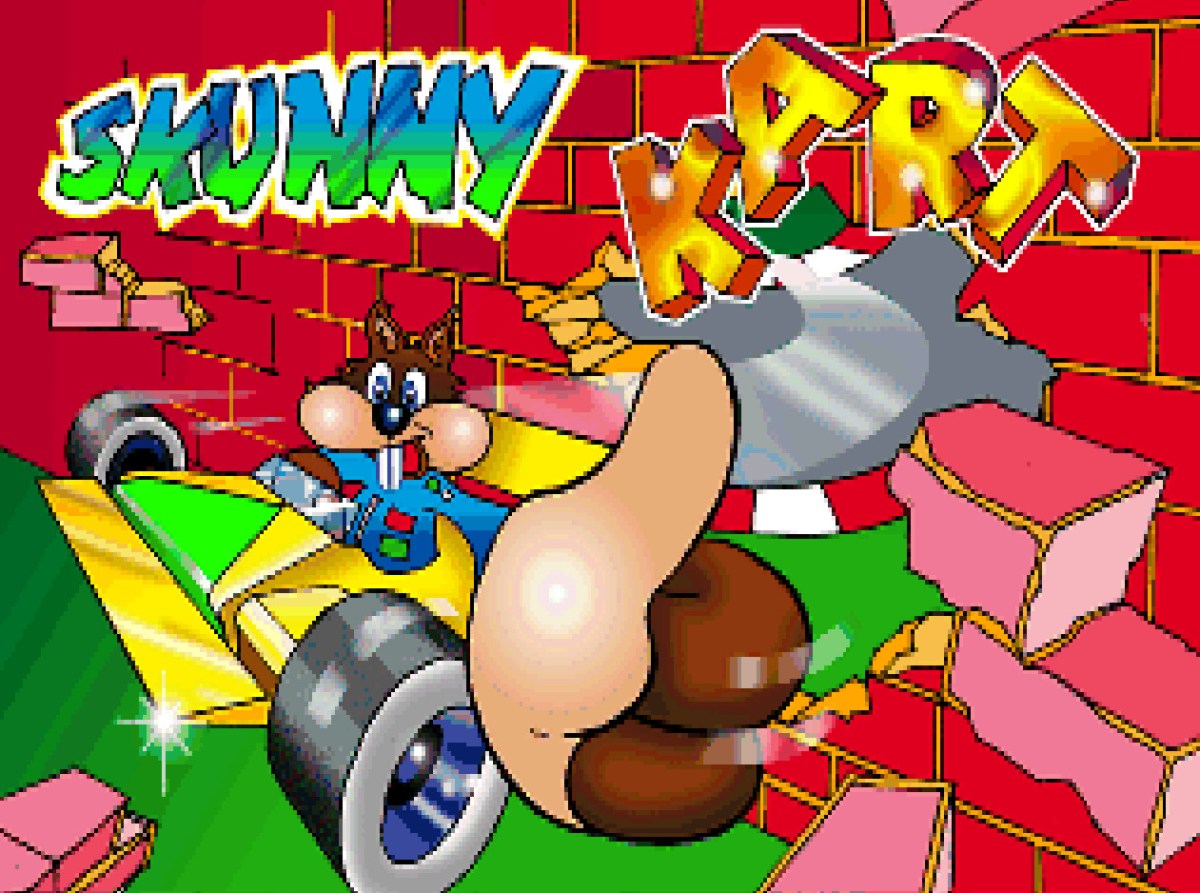

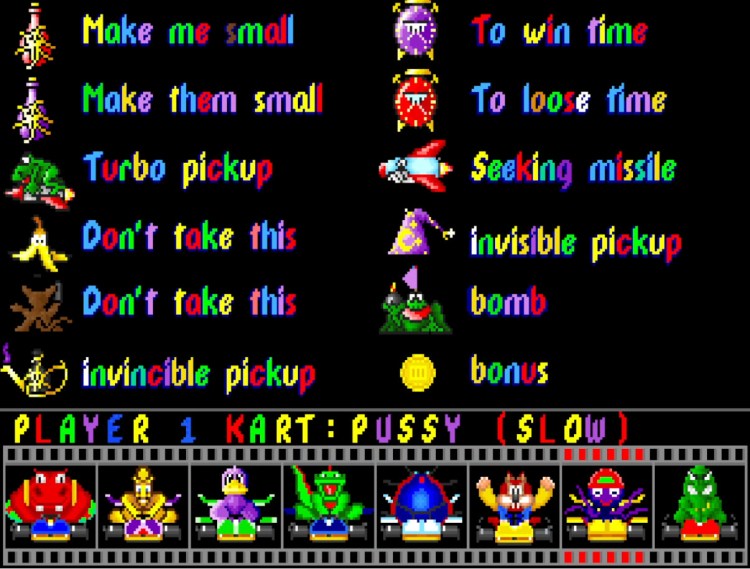
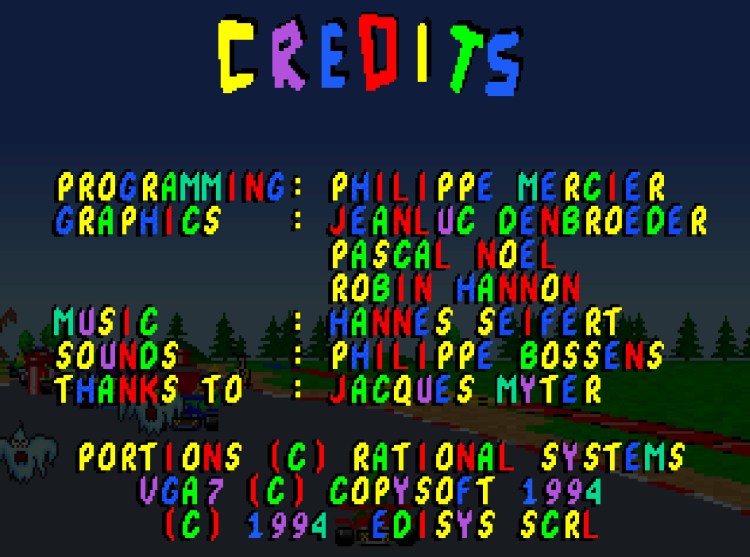
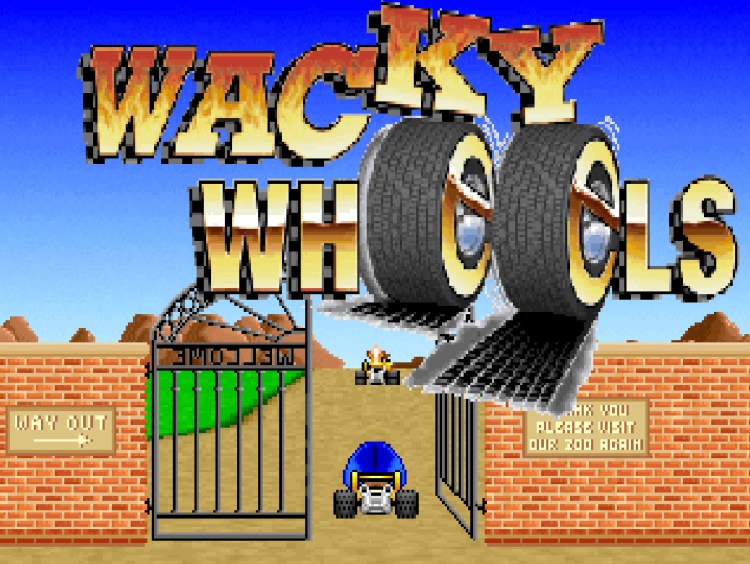





Published: Apr 20, 2022 09:00 pm